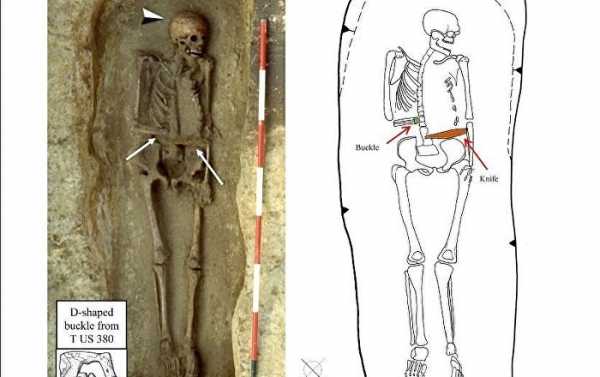
This strange medieval soldier was probably a common ancestor, Edward Scissorhands, ash from evil dead, Merle Dixon from the walking dead.
Archaeologists have unearthed a surprising puzzle of a man who looks like the individual remains and dates back to medieval times. The guy was obviously a soldier who all his life lived with an amputated arm, and the knife-shaped prosthesis is attached to the body.
More likely that his fake hand is actually ended with a knife, which performs the function of lost arms and he could fix his own teeth. The latter, also found a place nearby that was much worn, with a huge loss of enamel and bone lesions.

Buccal surface wear RI2 (A and B); type and orientation of wear is a clear sign of extra-masticatory use of teeth, which depicts the crown is significantly reduced (if not erased) in comparison with the left second incisor. (C) an x-ray of the upper right second incisor tooth, note the periapical lesion located at the proximal end of the root, T 380 with us. Lighter since noted bones around the field naked tooth roots RI2 is the result of postmortem damage
The researchers suggested that the skeleton during archeological works in Longobardic necropolis in Northern Italy and is estimated at 13-15 centuries.
The researchers, led by archaeologist Ileana Micarelli from Sapienza University in Rome, determined that the forces were withdrawn after the person has fallen or suffered blunt force injuries to the head, but no one can say for sure. Given the war-oriented culture of the Longobards, the limbs may have been lost in the fighting.
It is interesting that the amputated limb had a cap on it, apparently made of leather, which suggested that man lived for a long time after the injury, then the possible taking measures to prevent infections.
“It Longobards man shows a surprising survival rate after amputation in the pre-antibiotic era. It not only handles very well in his condition, he did it with a culturally-derived device, along with significant community support,” the research team wrote in their report for the journal of anthropological Sciences.
Sourse: sputniknews.com






